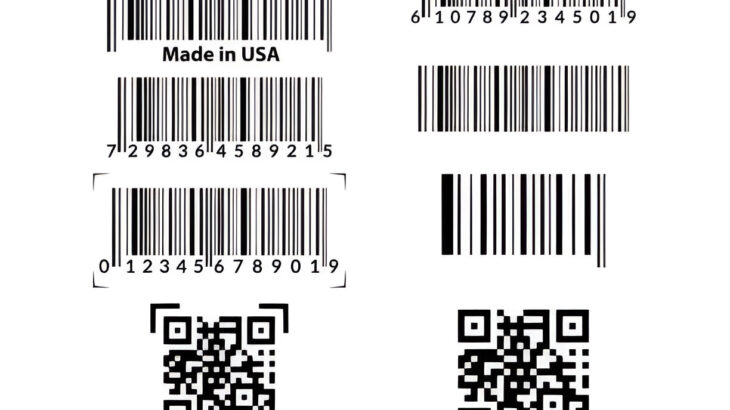In today’s world, sustainability is more important than ever. Consumers are increasingly looking for brands that care about the environment and make efforts to reduce their ecological footprint. One of the easiest ways for brands to show their commitment to sustainability is through their product labels. Sustainable labeling solutions are eco-friendly options that can help brands reduce waste, save resources, and attract environmentally conscious customers. Let’s explore some of the best Sustainable Labeling Solutions options available for brands today.
What is Sustainable Labeling?
Sustainable labeling refers to the use of environmentally friendly materials and printing methods for product labels. These labels are made from resources that have less impact on the planet. The goal is to reduce waste, pollution, and the use of harmful chemicals, while also offering a high-quality, functional, and attractive label for the product.
Why Choose Sustainable Labels?
- Environmental Impact: The production of traditional labels often uses materials and chemicals that are harmful to the environment. By using sustainable labels, companies can significantly reduce their ecological footprint.
- Customer Appeal: More and more consumers prefer to buy from brands that are conscious of their environmental impact. By choosing sustainable labeling, companies can attract eco-conscious buyers who are more likely to support green brands.
- Regulations and Compliance: In some regions, companies are required by law to use eco-friendly materials in their packaging. By adopting sustainable labeling practices, brands can ensure they comply with local regulations.
- Long-Term Savings: Sustainable labels often use fewer resources and are more efficient to produce. Over time, this can lead to cost savings for brands.
Eco-Friendly Labeling Materials
The first step toward sustainable labeling is selecting the right materials. There are many eco-friendly options available that help reduce the impact on the environment. Here are a few materials that are commonly used for sustainable labels:
- Recycled Paper Labels Recycled paper labels are made from paper that has been used before and repurposed into new products. This helps to save trees and reduces the amount of waste in landfills. Recycled paper labels are a great option for companies looking for an environmentally friendly choice that is also easy to print on and looks professional.
- Plant-Based Labels Plant-based labels are made from renewable materials such as sugarcane, bamboo, and corn. These materials are biodegradable, meaning they break down naturally over time without causing harm to the environment. Plant-based labels are an excellent choice for companies in the food and beverage industry, where sustainability is key.
- Biodegradable Labels Biodegradable labels are designed to break down more easily than traditional labels. They are made from materials that decompose naturally, like certain types of paper or plant-based plastics. These labels are ideal for products that will be disposed of quickly, such as cosmetics or household goods.
- Water-Based Inks Traditional inks used in labeling can contain harmful chemicals that can pollute the environment. Water-based inks are a greener option because they use water as the main solvent instead of chemicals. These inks are safer for both the environment and the workers who handle them.
- Recyclable Labels Some labels are made from materials that can be easily recycled, such as certain types of plastics and papers. Using recyclable labels helps ensure that the materials will be reused rather than sent to a landfill.
Sustainable Printing Practices
In addition to using eco-friendly materials, brands should also consider their printing processes. Sustainable printing practices can further reduce the environmental impact of labeling. Here are some ways companies can make their printing processes more sustainable:
- Digital Printing Digital printing uses less ink and produces less waste than traditional printing methods. It also allows for smaller print runs, which means brands only print the exact number of labels they need, reducing overproduction and waste.
- Eco-Friendly Adhesives Many labels use adhesives that are made from harmful chemicals. Eco-friendly adhesives are made from natural materials and are free of toxic chemicals. These adhesives are just as strong as traditional adhesives but have a lower environmental impact.
- Minimalistic Design A simple design can reduce the amount of ink used in the printing process, making it more eco-friendly. It also reduces waste by using fewer resources while still creating a professional, attractive label.
Benefits of Sustainable Labels
- Enhanced Brand Image: Brands that adopt sustainable labeling practices can enhance their reputation and stand out in a crowded market. Consumers are increasingly aware of environmental issues and are more likely to support brands that align with their values.
- Competitive Advantage: As sustainability becomes more important to consumers, brands that offer eco-friendly labels can gain a competitive edge over those that don’t. This can lead to increased sales and brand loyalty.
- Contribution to a Greener Future: By choosing sustainable labels, brands play a role in reducing waste, pollution, and resource depletion, contributing to a more sustainable future for everyone.
Conclusion
Sustainable labeling solutions are a smart choice for brands looking to reduce their environmental impact, appeal to eco-conscious consumers, and comply with regulations. Whether it’s using recycled paper, plant-based materials, biodegradable labels, or eco-friendly printing practices, there are many ways for brands to make their labeling more sustainable. As consumers continue to demand greener products, adopting sustainable labeling can be a powerful way for companies to demonstrate their commitment to a healthier planet.
